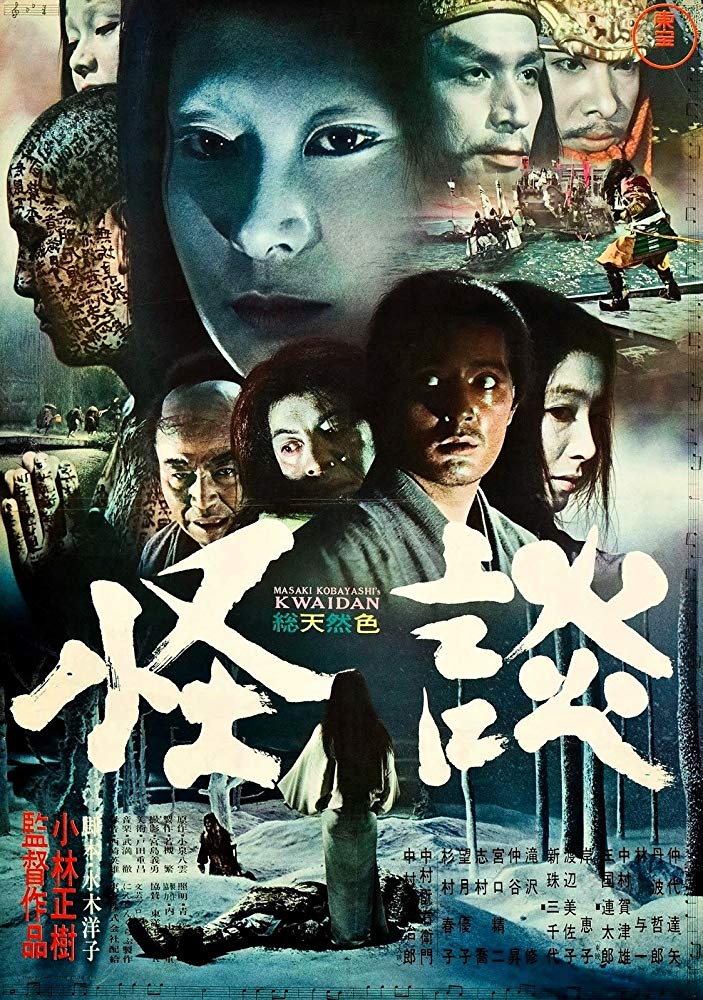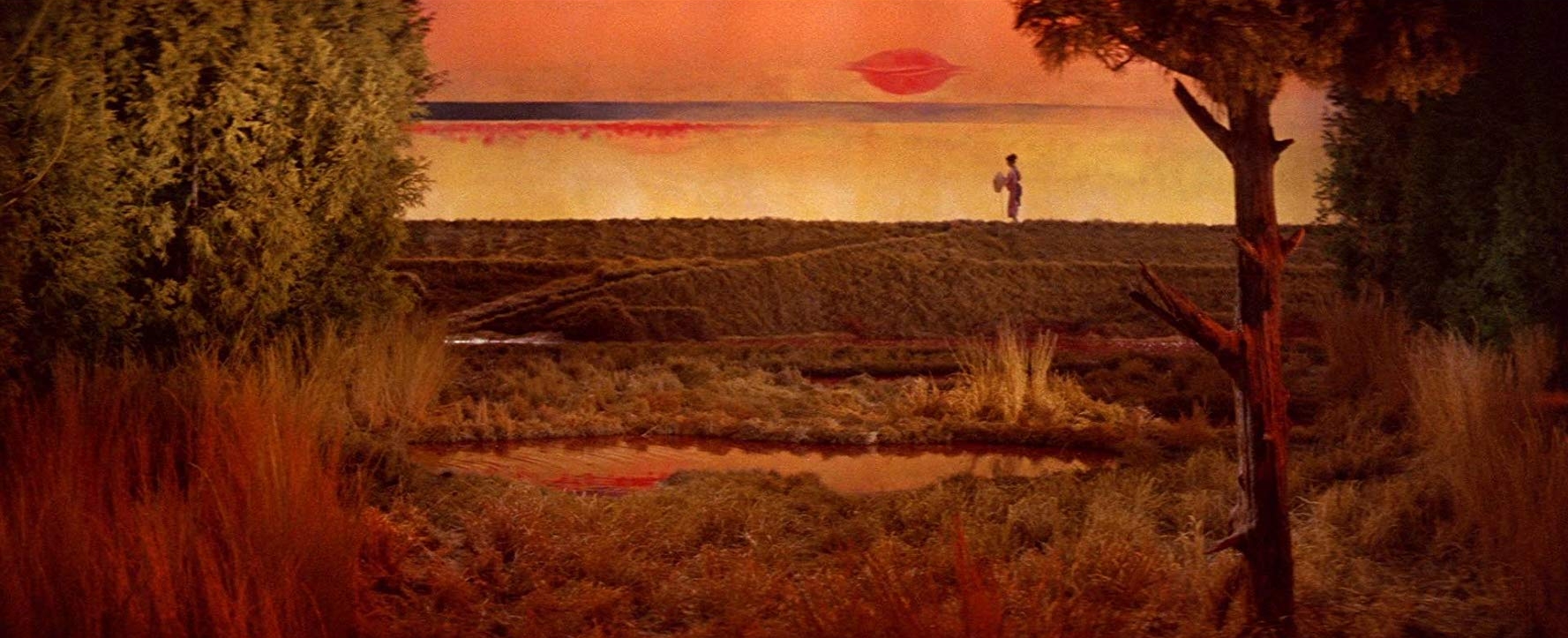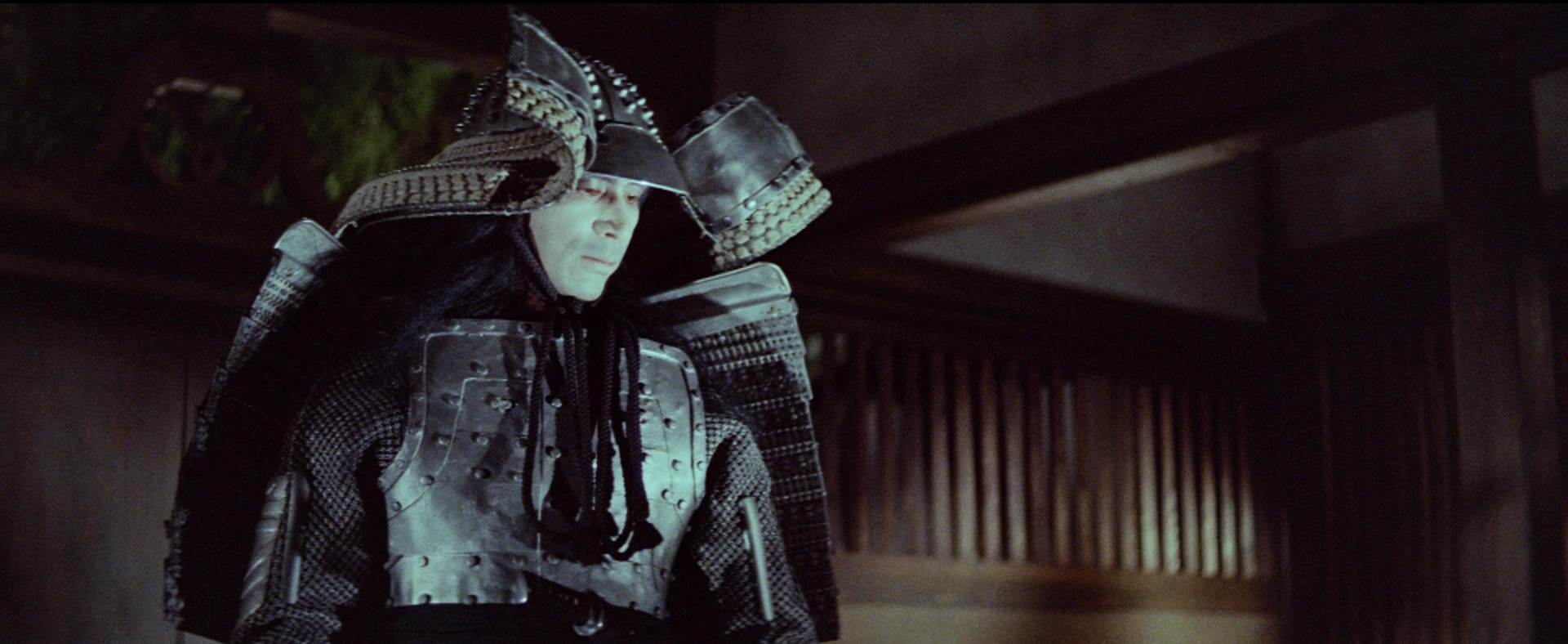Summary:
An anthology film of four Japanese folk tales with supernatural themes.
My Thoughts:
I feel as if this film had been on my “to watch” list for years, but for one reason or another I kept putting it off (length was a huge deterrent). With 31 Nights of Thrills under weigh, I decided to finally tackle this three-hour beast, and I’m glad I did. One of the main reasons I watch foreign language films is because it’s a glimpse into a different culture, a different way of life, and often times it can expand your views on the world around you. This film, being a collection of Japanese folk tales, was particularly interesting to watch because you can still see the influences of this film (and the stories told) in contemporary Japanese horror. As the film is broken into four sections I felt it best to break the review down likewise. Some spoilers for all of the segments, as I’ll be giving an brief overview of each.
The Black Hair
The first story in this movie revolves around an unnamed Husband (Rentaro Mikuni, “Vengeance is Mine”) and his Wife (Michiyo Aratama, “The Sword of Doom”) whom love each other, but live in poverty. Unable to take being poor any more, the Husband leaves his wife, despite her begging him to stay and promising to work all hours of the day and night, and he approaches a rich family for their daughter’s hand in marriage. Years pass, and the Husband realizes that he loves his first wife far more than his second wife (Misako Wantanabe, “Endless Desire”), and eventually he returns home.
I want to mention right away that all of these stories were rather predictable, but remember that they’re all folk tales. For me, the predictability didn’t bother me one bit; the stories felt poetic, yet simple, like haiku. The stories all feel like fables that have some sort of moral lesson, or at least, something for you to think about at the end of each one. By about twenty minutes in to each story you can tell where the story will end. What makes this film really worth watching is the craft that went in to each of these stories. With the Black Hair segment, I immediately found myself impressed with the use of the color red in the costumes and the sets. You could tell that almost every one of the scenes was shot on a set, but the set designer used this to their advantage, creating surrealistic skies and backdrops that emphasized certain themes for each story. The house of the husband’s first wife is particularly wonderful, especially after the Husband returns and the home is crumbling to the ground. The cinematography in this segment was also rather unique- there was a fair amount of Dutch angles used in the latter half of the film, and some very intriguing tracking shots as well. A lot of the cinematography in this segment reminded me of shots from the Evil Dead movies- one shot in particular looked like the famous demon POV shots of the series. The end of this segment becomes a surreal nightmare, one that I wont spoil (though the title sort of gives away a huge clue).
The Woman in the Snow
During a harsh blizzard a young woodcutter named Mi nokichi (Tatsuya Nakadai, “Ran”) and his elderly mentor Mosaku take refuge in a fisherman’s hut. During the night, Yuki-onna (Keiko Kishi, “The Twilight Samurai”), a ghostly woman with pale, almost blue, skin visits them and kills Mosaku. She then turns on Mi nokichi and tells him that she considered taking his life as well, but decided to spare him because he was so young. Her one condition for sparing his life is that he never speaks of what he saw, and she will be always watching him to make sure he doesn’t betray his promise. Mi nokichi returns home the next day, unsure if what he saw was a dream or not.
As with the other segment I was most impressed with the set design and incredible craft that went into them. The bulk of this segment is set, as the title might imply, in the snow. The first fifteen minutes of this film take place in a blizzard and the design is absolutely spellbinding and hypnotic. The sets are designed to look like a rolling forest of pine trees, and the blizzard rips through these tress in fantastic ways- the snow blows everywhere, and even when our heroes approach a river, that looks turbulent and impassable. The amount of work that must’ve went into creating the weather on these sets is baffling, but it looks absolutely gorgeous. One of the major themes in this segment is Yuki-onna’s ever-watching eye, and over all the backdrops of this segment are painted eyes in the sky. The primary color for this segment was blue, fitting for the way the story progresses and also the settings being primarily snow-covered. The ending of this story surprised me with how bittersweet it really was.
Hoichi the Earless
Many years after an epic naval battle, Hoichi (Katsuo Nakamura, ““Shirikurae Magoichi”), a blind biwa hoshi (a lute priest) is approached by a warrior whom wishes Hoichi to play for his empress back at her palace. Hoichi does, but his fellow priests begin to wonder where he goes. One night, two of the priests follow Hoichi and discover him playing the biwa in a graveyard. The priests then tell Hoichi he’s been playing to ghosts and that because he has followed the will of spirits, they must perform a ritual that will hopefully save his life.
This is the longest of all the segments, but it is by far the most epic as well. In all the other segments, I’ve spoken of how the sets are absolutely brilliant, but they barely hold a candle to the brilliance of some scenes in this segment. This segment begins with an epic naval battle that is all done on a stage with a surreal bloody red sky accentuating the violence. The battle itself is accompanied by a lilting melody that is played on the biwa, and it tells the story that Hoichi later plays when he enters the graveyard and performs for the spirits. The mis-en-scene in this segment absolutely blew me away; not only in the battle (which was probably the most impressive bit of this whole story, but also in the spirit’s palace. The previous two segments used reds and blues to highlight the themes of the film, but this segment used reds to highlight which places were filled with hate and violence, and blues to represent places filled with peace. The clashing of the colors, particularly in the palace, when rippling waves of smoke cascade down the stairs and catch the light, look absolutely dazzling on screen. I think out of all four segments this one was my favorite (though ‘The Woman in the Snow’ is an awful close second). The music in this segment plays a huge part in setting the atmosphere and tone of the whole piece- it strikes a perfect balance of eerie and melancholy.
In a Cup of Tea
A Cup of Tea begins by flashing forward to the year 1900 (all the other stories have been set hundreds of years ago). A narrator tells us that there are many stories in Japan that have a beginning but not an ending, and this is one of those stories. The story revolves around a samurai guarding a manor. One day, while fetching a drink of water, he sees the soul of a former samurai in the cup and he casts the drink aside. He fills a different cup and sees the same thing, but this time, he swallows the water. Later that night the spirit of the samurai haunts the samurai.
This is the shortest of the segments, and I far as style this was my least favorite of the stories, though that’s not to say that it was bad. I believe Kobayashi found a good story to end his film with, but it wasn’t nearly as impressive as the story previous. This story’s theme is somewhat Meta in that it encourages the viewer to think of an ending on his or her own, as ‘whatever ending I come up with wont be satisfactory.’ It’s an unusual way to end a three-hour epic, but somehow, even though this story want my favorite, it tied the themes of all the stories together in a nice closing statement.
Verdict:
This is a fantastic film, and I’m sorry that I put it off for so long. The length will, I’m sure, deter some viewers, but keep this film in mind for a rainy or wintery day. This film might be long, but it’s incredibly satisfying, and it’s a wonderful glimpse into a culture that most of us in America are probably unfamiliar with. For me, this was one of my favorite films I watched for 31 Nights of Thrills; it’s one that I’ve already encouraged my cinephile friends to watch. If you’re looking for a supernatural epic, you probably can’t beat this.
This is part of our 31 Nights of Thrills Series. Not all of the movies we review for this series will be strictly horror, but all will have something to do with the spirit of things spooky or scary. If you like those types of movies, be sure to check back throughout the month of October!
Review Written By:









